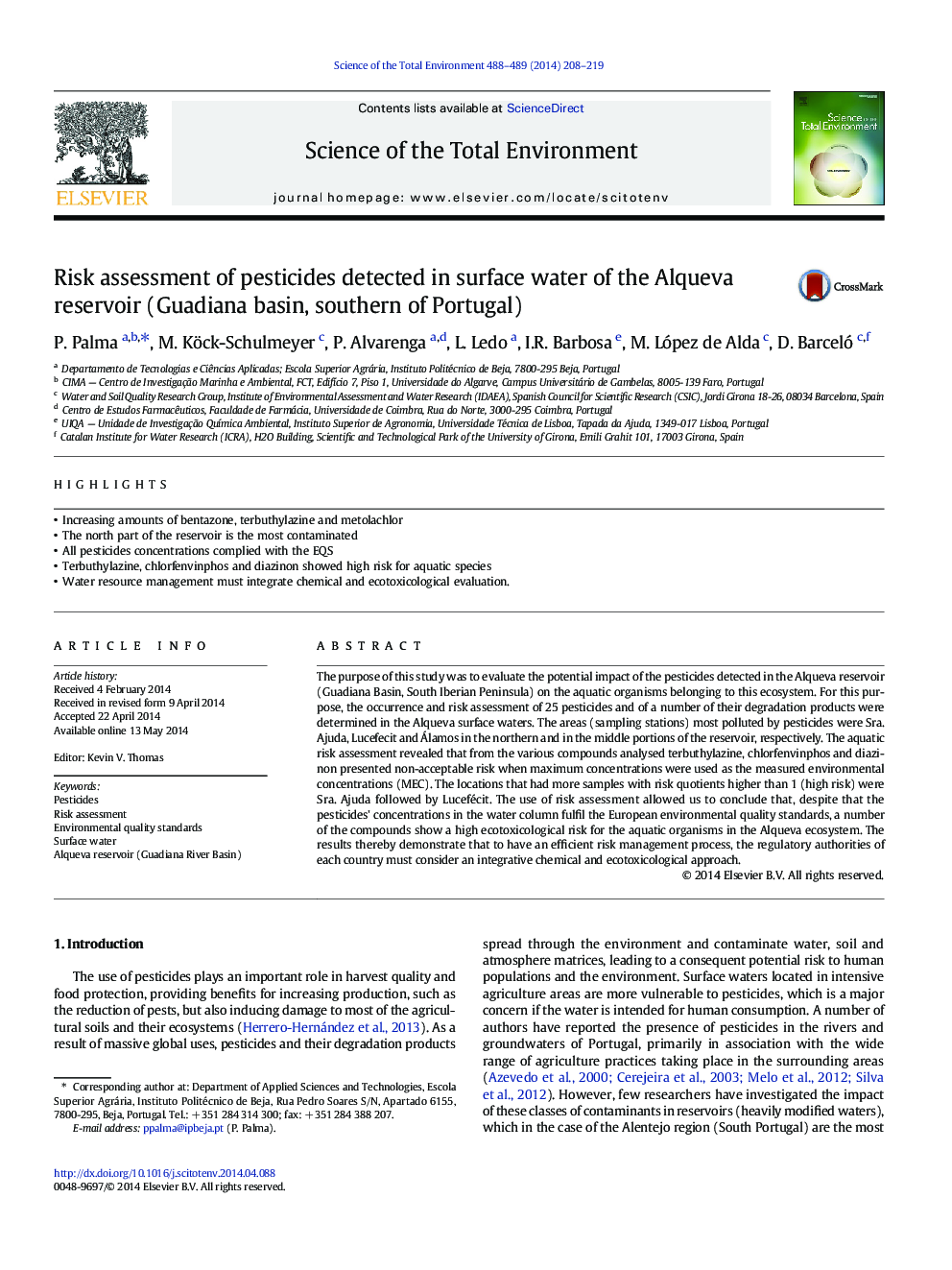| Article ID | Journal | Published Year | Pages | File Type |
|---|---|---|---|---|
| 6330158 | Science of The Total Environment | 2014 | 12 Pages |
â¢Increasing amounts of bentazone, terbuthylazine and metolachlorâ¢The north part of the reservoir is the most contaminatedâ¢All pesticides concentrations complied with the EQSâ¢Terbuthylazine, chlorfenvinphos and diazinon showed high risk for aquatic speciesâ¢Water resource management must integrate chemical and ecotoxicological evaluation.
The purpose of this study was to evaluate the potential impact of the pesticides detected in the Alqueva reservoir (Guadiana Basin, South Iberian Peninsula) on the aquatic organisms belonging to this ecosystem. For this purpose, the occurrence and risk assessment of 25 pesticides and of a number of their degradation products were determined in the Alqueva surface waters. The areas (sampling stations) most polluted by pesticides were Sra. Ajuda, Lucefecit and Álamos in the northern and in the middle portions of the reservoir, respectively. The aquatic risk assessment revealed that from the various compounds analysed terbuthylazine, chlorfenvinphos and diazinon presented non-acceptable risk when maximum concentrations were used as the measured environmental concentrations (MEC). The locations that had more samples with risk quotients higher than 1 (high risk) were Sra. Ajuda followed by Lucefécit. The use of risk assessment allowed us to conclude that, despite that the pesticides' concentrations in the water column fulfil the European environmental quality standards, a number of the compounds show a high ecotoxicological risk for the aquatic organisms in the Alqueva ecosystem. The results thereby demonstrate that to have an efficient risk management process, the regulatory authorities of each country must consider an integrative chemical and ecotoxicological approach.
